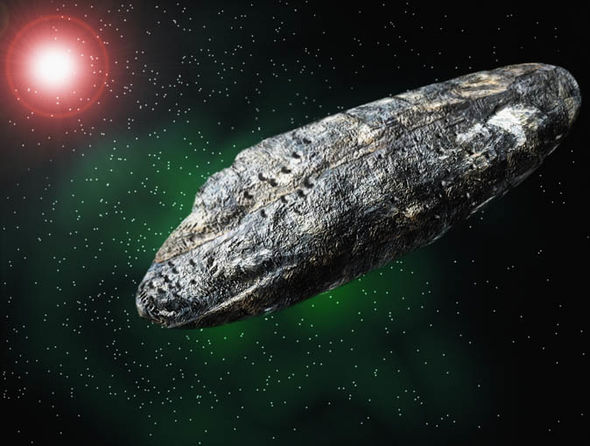A GIANT asteroid larger than a double-decker bus will come closer to the Earth than the Moon does, space agency NASA has warned.
The imposing space rock dubbed Asteroid VX1 will make its closest possible approach to Earth on Saturday evening, November 10. Asteroid trackers at NASA’s Jet Propulsion Laboratory (JPL) in Pasadena, California, expect Asteroid VX1 to swing by around 6.20pm GMT (UTC). At its closest, the asteroid will zip by from a distance of 0.99 Lunar Distances (LD) or just 237,037 miles (381,474 km) from Earth.
The distance is the equivalent of 0.00255 astronomical units (au), where one au is the distance from the Earth to the Sun or about 93 million miles (149.59 million km).
The incredibly close brush with the asteroid qualifies it for the title of a Close Earth Approach by a so-called Near Earth Object (NEO).
Close Earth Approaches are tracked by NASA’s Centre for Near Earth Object Studies (CNEOS) and the JPL at the California Institute of Technology.
The space agency said: “As they orbit the Sun, NEOs can occasionally approach close to Earth.
“Note that a ‘close’ passage astronomically can be very far away in human terms: millions or even tens of millions of kilometres.
“CNEOS software detects predicted Earth close approaches for all known NEOs, in both the past and the future, and tabulates the close approach data organised by time.”
NEOs are all comets and asteroids on trajectories which bring them incredibly close to our home planet.
Most of these interstellar objects are nudged towards Earth by the gravitational attraction of other nearby planets.
Although most of these space rocks are harmless, NASA keeps a watchful eye on their orbits in the event one is headed directly for Earth.
Courtesy of the Virtual Telescope Project in Italy, you can watch the safe passage of Asteroid VX1 live online tomorrow evening.
Gianluca Masi, head of the Virtual Telescope Project, said: “At Virtual Telescope we will show it live, online, next November 10, 2018, starting at 6pm UTC, to cover the moment of its minimum distance from us.”
Asteroid VX1 is estimated to measure somewhere between 25.9ft and 59ft (7.9m and 18m) in diameter.
The space rock could be almost twice as long as a double-decker bus or just slightly taller than a giraffe.
Astronomers first picked it up on November 4 at the Mt Lemmon Survey observatory in northeast Tucson, Arizona.
NASA has since calculated its trajectory around the solar system and has found the space rock will make more Close Earth Approaches on October 28 in 2026, October 17 in 2034, March 25 in 2035 and October 8 in 2042.
The asteroid is barrelling through space at speeds of around 13,555mph or 6.06km per second.








